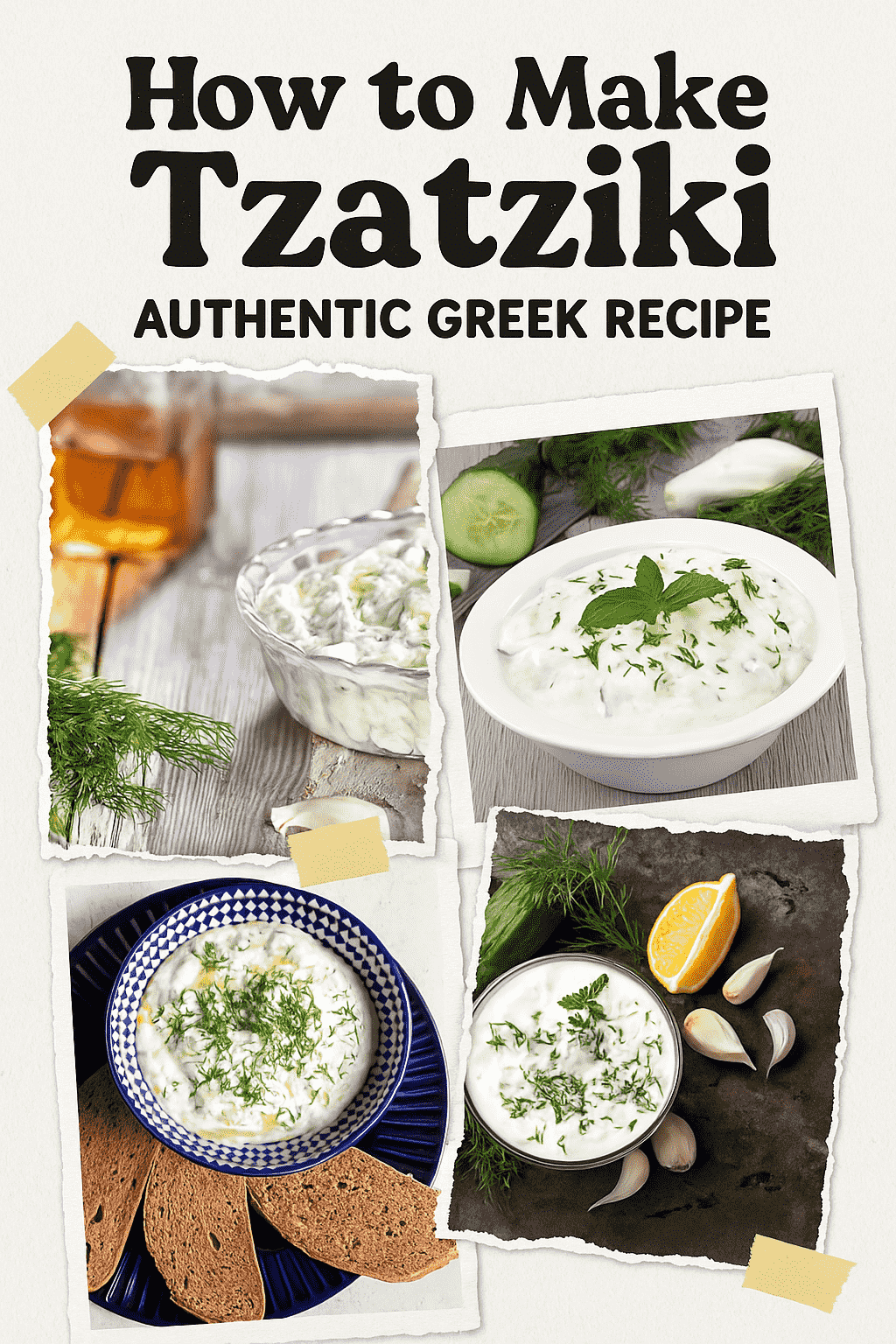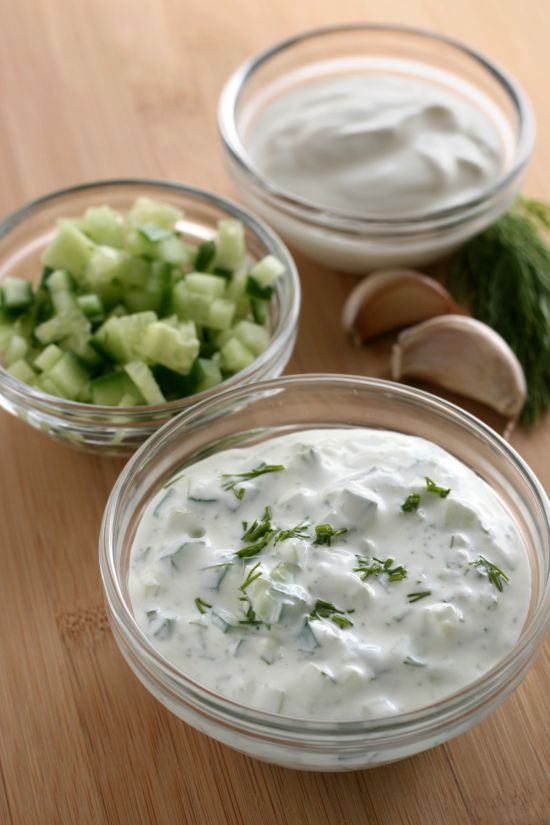How to Make Tzatziki – Authentic Greek Recipe
Tzatziki is one of those magical sauces that’s simple, fresh, and loaded with flavor. It’s a staple in Greek cuisine and has made its way into hearts and kitchens all over the world. Creamy, garlicky, tangy, and cooling – it pairs perfectly with grilled meats, warm pita bread, roasted veggies, or just as a dip for whatever you’ve got on hand. But what makes tzatziki truly great isn’t just the ingredients – it’s the way it’s made. An authentic Greek tzatziki isn’t rushed. It’s about the balance of flavors, the proper texture, and the right techniques that elevate it from a basic yogurt sauce to a must-have dish on any Mediterranean table. Whether you’re a home cook trying it for the first time or someone who’s tasted tzatziki in a seaside taverna and wants to bring that memory home, this guide will walk you through the real deal.
What Is Tzatziki?
Tzatziki (pronounced tsaht-ZEE-kee) is a traditional Greek dip made from thick strained yogurt, grated cucumber, garlic, olive oil, vinegar or lemon juice, and fresh herbs like dill or mint. It’s cold, creamy, and refreshing, with a slightly tangy edge that makes it perfect for cutting through rich or spicy foods. In Greece, it’s often served as a mezze (appetizer) alongside bread or grilled meat like souvlaki and gyro. While similar sauces exist in other cultures – like the Turkish cacık or the Indian raita – tzatziki has its own distinct taste and consistency that makes it unmistakably Greek.
Ingredients You’ll Need
To make authentic tzatziki, you’ll want high-quality ingredients. This dish is all about freshness, so don’t skimp – especially on the yogurt and olive oil. Here’s what you’ll need:
-
Greek yogurt (500g, full-fat and plain – strained or very thick)
-
Cucumber (1 medium, ideally seedless)
-
Garlic (2–3 cloves, finely grated or crushed)
-
Extra virgin olive oil (2–3 tablespoons)
-
White wine vinegar or fresh lemon juice (1 tablespoon)
-
Salt (to taste, around ½ teaspoon)
-
Fresh dill (1–2 tablespoons, finely chopped – optional but traditional)
-
Optional: fresh mint (for a slightly different flavor twist)
Choosing the Right Yogurt
The base of tzatziki is yogurt, so it needs to be the real thing – thick, creamy, and tangy. Greek yogurt is ideal because it’s already strained and has a high fat content. Don’t use low-fat or flavored yogurts; they’ll water down the sauce and mess with the texture and taste. If you can’t find authentic Greek yogurt, you can use plain full-fat yogurt and strain it yourself using cheesecloth or a clean kitchen towel over a sieve. Let it sit for at least a few hours, or overnight, in the fridge. This removes excess whey and gives you that rich consistency tzatziki is known for.
Preparing the Cucumber
Cucumber adds freshness and a gentle crunch to tzatziki, but it can also bring in unwanted moisture. To avoid watery sauce, you’ll need to grate the cucumber and then squeeze out the liquid. Peel the cucumber if the skin is thick or bitter, then grate it finely. Use your hands, a cheesecloth, or a sieve to press out as much water as possible. Some people sprinkle a little salt on the grated cucumber and let it sit for 10–15 minutes before squeezing – this helps draw out more moisture. The result should be damp, not dripping. Once it’s dry, your cucumber is ready to mix.
Crushing the Garlic
Garlic gives tzatziki its signature kick. Use fresh cloves and crush or grate them very finely. Avoid pre-minced garlic or garlic powder – they lack the depth of flavor you need. If raw garlic is too strong for your taste, you can soak the minced garlic in a bit of vinegar or lemon juice for 5–10 minutes before mixing. This mellows the sharpness while keeping the aroma. Start with two cloves and adjust based on your preference – just remember that tzatziki shouldn’t be overpoweringly garlicky, but it should have a definite bite.
Mixing the Sauce
Once your ingredients are ready, it’s time to bring it all together. In a bowl, combine the strained yogurt, grated cucumber, garlic, olive oil, vinegar (or lemon juice), and salt. Stir it well until it becomes smooth and creamy. Add in the chopped dill (and mint, if using), and give it one final mix. At this point, taste it and adjust. Need more tang? Add a splash of vinegar or lemon. Too thick? Add a teaspoon of olive oil. Too garlicky? Let it chill – the flavor will mellow as it rests. Authentic tzatziki benefits from time in the fridge. Cover and refrigerate it for at least one hour before serving – longer is even better. This helps the flavors come together and thickens the texture even more.
Serving Suggestions
Tzatziki is incredibly versatile. Serve it as a dip with warm pita, crusty bread, or crunchy vegetables like carrots, celery, and bell peppers. Spoon it over grilled meats like chicken souvlaki, lamb kebabs, or pork gyros. It also works beautifully as a sauce for falafel, roasted potatoes, or grain bowls. In Greece, it’s often part of a mezze platter with olives, dolmas (stuffed grape leaves), and feta. For a summer BBQ or picnic, tzatziki adds a cool touch to spicy dishes and balances out rich mains with ease.
Storage Tips
Tzatziki keeps well in the fridge, but it’s best eaten within 3–4 days. Store it in an airtight container and give it a good stir before serving, as some liquid may separate over time. Don’t freeze tzatziki – the yogurt and cucumber texture doesn’t hold up well when thawed. If you notice it getting too watery, simply stir it again or spoon off a little of the excess moisture.
Common Mistakes to Avoid
Using watery yogurt: Always use thick, strained yogurt. Regular yogurt will create a runny tzatziki that lacks body. Not draining cucumber enough: This is the top mistake. Properly squeeze out the water to avoid a diluted, soggy dip. Too much garlic: A little goes a long way. You want balance, not breath-clearing power. Skipping the rest time: Letting it sit in the fridge isn’t optional – it’s essential for developing the right texture and flavor. Using old herbs: Fresh dill or mint is key. Dried herbs just don’t offer the same vibrant taste or aroma.
Variations and Twists
While the authentic version is always a winner, you can play with ingredients to suit your tastes. Add a splash of fresh lime juice for a citrusy punch. Mix in a spoon of tahini for a nuttier, earthier version. Swap dill for mint for a lighter, more refreshing profile. Add a pinch of sumac or cumin for a Middle Eastern touch. You can also fold in a handful of chopped walnuts or almonds for texture, or stir in a spoonful of crumbled feta for extra richness. Just keep the core elements – thick yogurt, cucumber, garlic, and olive oil – and experiment with balance from there.
A Note on Pairing with Meals
Tzatziki is naturally cooling and works wonders with hot or spicy dishes. It cuts through fatty meats and spicy sauces, making it the perfect side for grilled lamb, spicy chicken, or shawarma. It also works well with vegetarian meals like lentil patties, zucchini fritters, or chickpea salads. In summer, pair it with watermelon and feta for a refreshing mezze combo. For winter, serve it alongside roasted root vegetables or with hearty stews for a contrast in texture and flavor.
Hosting with Tzatziki
If you’re hosting friends or family and want to impress, tzatziki is a great addition to the table. Make a mezze spread with hummus, baba ganoush, roasted peppers, olives, and pita. Add some grilled meats or skewers, a big Greek salad, and you’ve got a Mediterranean feast. You can even use tzatziki as a base for wraps or sandwiches – it works beautifully with grilled veggies, feta, and greens in a warm flatbread.
Final Thoughts
Tzatziki is more than just a dip – it’s a celebration of simple, fresh ingredients. The creamy texture, cool cucumber, bold garlic, and fragrant herbs create a sauce that’s light but flavorful, familiar yet exciting. When made right, it’s not just a side dish – it’s the star of the table. With just a few steps and a bit of patience, you can bring authentic Greek tzatziki into your kitchen and enjoy a taste of the Mediterranean any time. Once you try homemade tzatziki, you’ll never go back to store-bought versions again. So grab some yogurt, pick up a cucumber, and start mixing. Opa!
Images via: Pinterest










